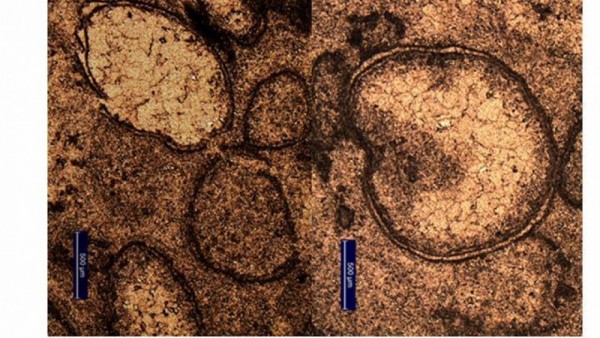Evidence Found in Australia of Giant Asteroid That Hit Earth 3.4 Billion Years Ago
| Ana Verayo | | May 17, 2016 04:57 AM EDT |
(Photo : A. Glikson/ANU) Impact Spherules
Australian scientists recently uncovered some curious ancient remnants of an asteroid known as spherules, that had hit the surface of the planet billions of years ago when Earth was still in its formation stage.
These are described as tiny glass spheres that are composed of vaporized material from Earth and the asteroid, forming these spheres from a sudden, intense heat source, that are commonly associated with asteroid impacts.
Like Us on Facebook
Geologists from the Australian National University led by Andrew Glikson are now investigating these spherules in this new study, revealing new clues about the Earth's evolution. Researchers located these glass beads that were scattered around in the ocean, buried deep inside sediments, dating back to the Archean Eon, roughly 3.46 billion years back. This type of spherule deposit also suggests that this impact left evidence of a crater around 12 to 18 miles wide underwater.
With these new findings, researchers now believe that that they have discovered crucial evidence of the second oldest asteroid impact and also one of the biggest ones during the history of the planet.
According to Glikson who is also from the ANU Planetary Institute, this impact would have also generated numerous tremors and also giant earthquakes with a magnitude even greater than most land quakes, causing gigantic tsunamis, destroying cliffs and coastal landscape. This would also suggest that this impact material would have been scattered throughout the world.
This asteroid strike also would have coincided during a time when the moon was attacked by an asteroid swarm as well, where this devastating lunar impacts are still seen today in the lunar mare.
Glikson says that the exact location where the asteroid made impact and crushed the surface, still remains unknown, since craters that were created during this time would have been covered by volcanic activity and even tectonic plate movements.
Glikson and his team spent the last 20 years searching for these ancient craters, where he has already identified 17 of them. He also believes that there are hundreds of them around the world, for their ancient signatures to be exposed once more. He adds, asteroid strikes this massive most likely resulted in tectonic shifts and extensive magma flows and would have been a crucial event with lasting effects during the Earth's early evolution.
This new study is published in the journal Precambrian Research.
Tagsearth evolution, Asteroid impact, asteroids, evidence asteroid impact earth, ancient asteroid
©2015 Chinatopix All rights reserved. Do not reproduce without permission
EDITOR'S PICKS
-

Did the Trump administration just announce plans for a trade war with ‘hostile’ China and Russia?
-

US Senate passes Taiwan travel bill slammed by China
-

As Yan Sihong’s family grieves, here are other Chinese students who went missing abroad. Some have never been found
-

Beijing blasts Western critics who ‘smear China’ with the term sharp power
-

China Envoy Seeks to Defuse Tensions With U.S. as a Trade War Brews
-

Singapore's Deputy PM Provides Bitcoin Vote of Confidence Amid China's Blanket Bans
-

China warns investors over risks in overseas virtual currency trading
-

Chinese government most trustworthy: survey
-

Kashima Antlers On Course For Back-To-Back Titles
MOST POPULAR
LATEST NEWS
Zhou Yongkang: China's Former Security Chief Sentenced to Life in Prison

China's former Chief of the Ministry of Public Security, Zhou Yongkang, has been given a life sentence after he was found guilty of abusing his office, bribery and deliberately ... Full Article
TRENDING STORY

China Pork Prices Expected to Stabilize As The Supplies Recover

Elephone P9000 Smartphone is now on Sale on Amazon India

There's a Big Chance Cliffhangers Won't Still Be Resolved When Grey's Anatomy Season 13 Returns

Supreme Court Ruled on Samsung vs Apple Dispute for Patent Infringement

Microsoft Surface Pro 5 Rumors and Release Date: What is the Latest?










